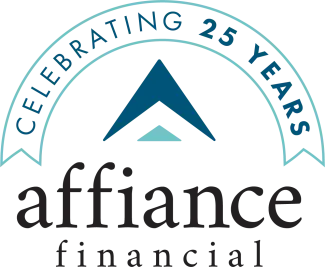
Legacy Planning — The overlooked tool for leaving more than you thought possible
This is the first in a series of articles about legacy planning. The idea of the series is to introduce legacy planning and explain why we feel it is a valuable component of any estate or financial plan. In this article, we describe the differences between estate planning and legacy planning. In future articles, we will go more in depth about what legacy planning looks like and includes. And finally, at the end of the series, we will provide you with a few exercises to get you started on your own legacy plan.
To be rooted is perhaps the most important and least recognized need of the human soul.
— Simone Weil
Do not be alarmed, but I am willing to bet that there is something extremely important missing from your estate plan. If you don’t believe me, go get your documents and email me the section from your plan where it tells your family you love them, or the paragraph which describes those organizations which have had the biggest impact on your life, or even a single sentence that captures the essence of who you are.
I’ll wait… but in the meantime, I want to share with you a way that you can complement your estate plan with another plan that conveys more than mere dollars and cents to your heirs.
After law school, I worked at a boutique estate planning firm in Chicago. We did planning which ranged from basic to complex. Some documents were only a few pages, while other plans included multiple trusts, sophisticated tax planning, and extensive wealth transfer strategies. One thing that always bothered me, however, was no matter how long or intricate a document was, it rarely communicated anything of value to one’s heirs. The provisions were written for lawyers, accountants, trustees, and the IRS, but nothing was said to those whom you cared about most deeply.
That is why, when I first began to learn about legacy planning, I was immediately taken by how powerfully a formal legacy plan can complement a more traditional estate plan.
Over the next few quarterly newsletters, I hope to introduce you to more legacy planning concepts, make an argument for why you may want to consider creating your own legacy plan, and provide you with a few exercises to assist you with the sometimes daunting task of transmitting your legacy. To begin, however, I’d simply like to explain the difference between estate planning and legacy planning, so that you can understand and appreciate why both are integral to leaving a meaningful inheritance for your descendants and your community.
There are only two lasting bequests we can hope to give our children.
One is roots and the other is wings.
— Hodding Carter
Most of us are familiar with an estate plan. This is essentially the legal infrastructure we create during our lifetimes to make sure that assets are distributed in an orderly, tax efficient, and intentional manner at our deaths.
The two primary documents which create this infrastructure are a will and a trust. The process has also crept a bit into end-of-life planning as well, via health care directives and powers of attorney. These four documents make up the vast majority of the estate planning protocol for most clients. There are certainly other planning vehicles, but a will, trust, all of the others share one thing in common: they are technical mechanisms for transferring assets. Be it money, investments, property, or just plain stuff, an estate plan tells everyone where things should go.
To reinforce just how technical these documents can be, are you still trying to read your will?
This is not to say that estate planning is not an important and valuable exercise, but we need to understand that other than our wealth, an estate plan passes little else to our families and communities.
So, if estate planning is the legal mechanism to transfer our assets, what is legacy planning?
Unfortunately, legacy planning cannot be described as succinctly as estate planning, but if I had to describe it in one sentence, I would say: Legacy planning is the process one goes through to capture, preserve, and transmit one’s values, morals, life lessons, and outlook to those he/she cares about most dearly. One of the most common vehicles used in legacy planning is an ethical will, but there are many other tools you can use to create your legacy plan.
Legacy planning is the process one goes through to capture, preserve, and transmit one’s values, morals, life lessons, and outlook to those he/she cares about most dearly.
Unlike a legal will, an ethical will is not a legally binding document, but rather it is binding in the sense that it ties one generation to another. While certain aspects of an estate plan need to strictly conform to IRS or other guidelines, the rules which guide your legacy plan are only limited by your imagination, planning, and effort. And, while I would never advise someone to prepare a legacy plan and neglect their estate plan, more and more I am encouraging others to add some personal legacy planning components to their estate planning process.
In future articles, I will go more in depth about legacy planning and its components, but for now I just want to provide one or two sentences about the what, the how, and the when. What do you want to include? How do you want it to look? When, and with whom, do you plan to share it? I also want to explain why I think it is important and beneficial to go through the legacy planning process.
As I said before, what your plan includes and how it looks are really only limited by your imagination. Often, legacy plans are stories written on paper, but I have seen plans that are simply a list of anecdotes, a selection of favorite quotes, or even plans comprised almost entirely of pictures. Maybe you want to incorporate a family tree into yours. While many find it easiest to write, others have made videos or recordings. I am not personally very artistic, but if you are, I would encourage you to incorporate that talent into your legacy plan.
It will also be helpful to think about who the audience will be for your legacy plan, and when you want to share it with them. If your children are going to receive your legacy plan, do you want to share it with them today, in the future, or when you are no longer here? If your legacy is most closely tied to a particular organization, then maybe a video, piece of art, or a collage will be more accessible than a book or written narrative.
Just as you would not expect to complete your estate plan in one meeting, your legacy plan will require a commitment of time and energy on your part, but I believe that the reason you should embark on a legacy planning journey is because the return on your investment will be significant. Your family and community will thank you for leaving them something more valuable and longer lasting than money. You will feel comforted in knowing that your real legacy is not something that can be spent, but something that can be savored. And you may find the process to be reflective and introspective as well.
One nice thing about a legacy plan, is that it does not require you to work with a professional to complete, there is no right way to create it, and no wrong time to start. But in my experience, talking with someone who has experience preparing legacy plans can be very valuable. If you think creating a legacy plan is something that appeals to you, then I invite you to follow along for the next year as we explore legacy planning further. And as always, do not hesitate to reach out to your Affiance advisor if you want more information today.

